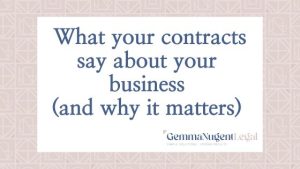Australian Standard contracts… Love them or hate them, if you are involved in commercial construction you’ll be dealing with them day in and day out. In this article I’m going back to basics with a refresher on how they operate. If you sometimes find yourself asking “what is an Australian Standard contract?”, read on.
WHAT IS A “STANDARD FORM” CONTRACT?
A “standard form” contract is one with a set of largely standardised, pre-written terms and conditions.
In consumer contracts, these terms and conditions are often set and not open to negotiation. You might have come across this kind of contract when you joined a gym or signed up to a mortgage with a big bank.
Many commercial industries also employ “standard form” agreements for stand alone projects. The terms will have been developed by an industry advocacy organisation or membership association after consultation with industry stakeholders. They are capable of operating as an effective contract without any negotiation. However, often the parties will amend them (sometimes beyond recognition!) to suit a particular project or risk appetite.
COMMON “STANDARD FORM” CONTRACTS IN THE AUSTRALIAN CONSTRUCTION INDUSTRY
There are quite a lot of standard forms used in the Australian construction industry. The most common are:
- suites of commercial and residential construction contracts sold by the state chapters of the Master Builders Association (e.g., MBAWA) and the Housing Industry Association;
- the Australian Building Industry Contracts (ABIC) developed jointly by the MBA and the Australian Institute of Architects; and
- the Australian Standard contracts published by Standards Australia.
There are many Australian Standard forms of contract, to cover different contracting relationships and requirements of construction projects.
The vast majority of project contracts we draft and review at SoundLegal are based on the Australian Standard contracts, so that’s where I’ll keep my focus.
AN AUSTRALIAN STANDARD “CONTRACT” IS ACTUALLY ONLY THE GENERAL CONDITIONS
One thing that tends to be misunderstood, is that what we call “Australian Standard contracts” are typically only the general conditions of contract. Even if you populate the annexures (where the project details go), an Australian Standard general conditions document alone won’t create a contract.
The parties will need a separate document (usually called an “instrument of agreement”) to sit over the top of the general conditions and create a framework for all of the commercial details. Often the instrument will also attach “schedules” (this just means attachments) to capture the contract sum, the scope of works and the program.
Also, if the parties decide not to fork out for a licence, then they need somewhere to put all their special conditions amending the contract terms (more on this in a moment). These can be attached to the instrument.
Sometimes the general conditions aren’t even included in their complete form… they are “incorporated by reference”. That means that there will be a statement in the instrument that says something like “The terms of this agreement are the AS4000-1997 General Conditions of Contract, which are incorporated by reference”. When this happens, it’s up to the parties to take themselves off to Standards Australia or SAI Global and buy a copy of the relevant general conditions so that they know what they’re getting in to.
ARE STANDARD FORM CONTRACTS USED ON EVERY CONSTRUCTION PROJECT?
There are no recent figures confirming the prevalence of standard form contracts on Australian construction projects.
A 2014 Research Report published by the University of Melbourne gathered data from 379 Australian construction projects. Around 68% of those projects were conducted under standard form contracts, most commonly AS4300 (for design and construct), AS4000 (construct only), AS2124 (construct only) and AS4902 (design and construct subcontract). The researchers found that standard form contracts were more common on lower value commercial projects.
Anecdotally (and certainly in my experience), Australian Standard contracts continue to dominate the Australian commercial construction contract landscape.
SO, IS IT OK TO JUST SCAN AN OLD AUSTRALIAN STANDARD CONTRACT FROM SOME OTHER PROJECT AND THROW IT IN YOUR CONTRACT?
No. Or at least, not without breaching Standards Australia’s copyright and other intellectual property in these documents.
If you want to use an Australian Standard contract and share its terms in their entirety, you need to purchase a licence or a licensed copy from Standards Australia or one of its distributors first. There are various types of licences at different price-points.
Also, remember that an old project contract might not be unadulterated. I often see the old sneaky scan done with no regard for the project-specific amendments that may have been made on the previous project. This is particularly risky if the original project owner purchased an “editable” version (i.e., a Word version that they can amend at will within the document), as the amendments may not be immediately obvious.
WHAT’S GOOD ABOUT AUSTRALIAN STANDARD CONTRACTS?
The University of Melbourne found that the main reason for using an Australian Standard contract was familiarity.
There’s a lot to be said for this. Contracting parties use them because everyone knows what to expect, and there is at least a perception that this means less haggling over contract terms (and maybe the powder is kept dry for haggling over price and program).
Standards Australia seeks detailed input from various industry stakeholders during the drafting process. This is intended to result in contract conditions that:
- deal effectively with the critical project criteria of time, quality and cost;
- allocate risk appropriately to where it can best be controlled (in line with the Abrahamson principle); and
- can be used to manage most types of commercial construction project and relationship.
Not everyone agrees that they are balanced or effective but generally speaking Australian Standard contracts can support most construction projects and relationships.
IF AUSTRALIAN STANDARD CONTRACTS ARE PRETTY GOOD, WHY ARE THERE 50 (OR MORE) PAGES OF AMENDMENTS IN YOUR PROJECT CONTRACT?
Some project owners feel that the Australian Standard contracts are overly contractor-friendly. This might mean that risk is unevenly allocated to the Principal, who might not be best placed to control it. The Principal tends to amend the general conditions (often quite heavily) so that the Principal and Superintendent have more control over variations, delays and termination.
If this happens in the head contract, of course these changes are then passed down through the supply chain to consultants, subcontractors and suppliers.
Also, remember that many Australian Standard contracts were drafted quite some time ago. The very common AS4000 and AS2124 suites of contracts were drafted in the grand old days of the 1990s. Back then, there was no such thing as GST or security of payment, never mind modern slavery and the ABCC. Arguably, these forms of contract need some amendments just to bring them into the 21st century.
The practice of amending the AS contracts has become so ubiquitous that an experienced construction lawyer or commercial manager is going to be an old hand with common changes. That means that even with these amendments, familiarity is still an advantage.
SHOULD YOU EMBRACE AN AUSTRALIAN STANDARD CONTRACT FOR YOUR UPCOMING PROJECT?
Obviously every project is different, but for your average commercial construction project the Australian Standard contracts are a good starting point, for three reasons:
- reduced time and money spent on drafting a tailored contract;
- reduced time and money spent on negotiation of terms, because everyone is familiar with them; and
- reduced time and money spent on drafting subcontracts, because there are “suites” of contracts that can work together effectively to pass scope and risk down through the supply chain.
All of that said, I recommend you engage a lawyer to prepare an instrument of agreement that suits you and your business. However, after this has been done once, it creates a template that needs minimal re-work on future projects.
How can SoundLegal help?
We have drafted instruments and amendments for, reviewed and negotiated pretty much every Australian Standard contract you can poke a stick at. We can make recommendations about the particular version that’s best suited to your project and what amendments (if any) are needed to make it work. Get in touch to find out how we can help.






